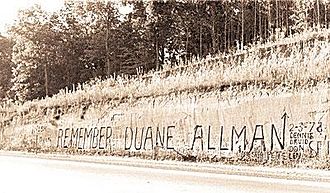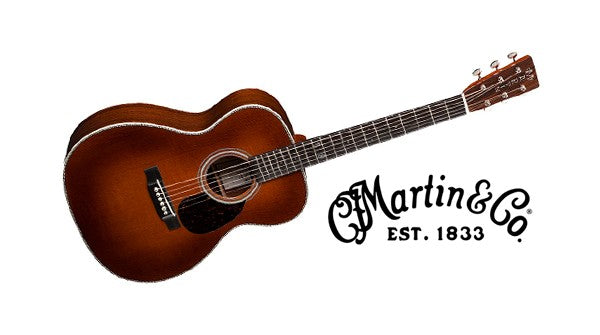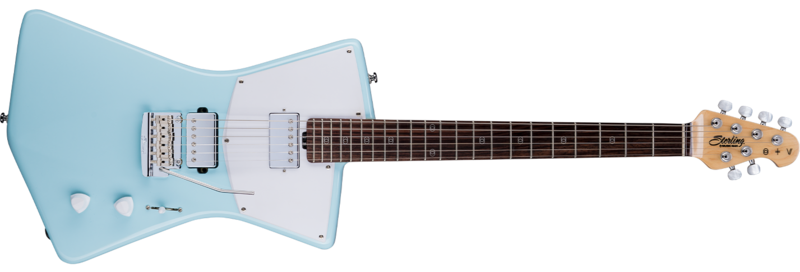Your Cart is Empty
The Gibson ES-175 -More Than Just a Jazz Guitar
April 24, 2019 4 min read
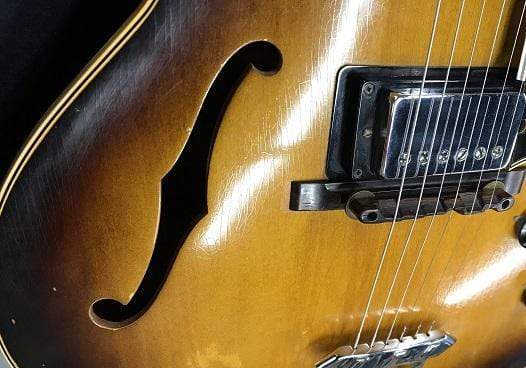
The Gibson ES-175 is an iconic hollow body Jazz guitar played by many legendary guitarists including Joe Pass, Jim Hall, Pat Metheny and Steve Howe. Known for many years as the ‘workhorse of modern Jazz guitar,’ the Gibson ES-175 has an iconic sound that has been imitated by many guitar makers, but never precisely duplicated. In its long production history, the ES-175 has become synonymous with the greats of Jazz guitar. Its tone is warm and rich but also clean and articulate, chiming with a quality that is both spacious and airy but also distinct and bell-like. The ES-175 is unique among hollow bodies for its sonic versatility and its ability to stand up to more modern levels of crunch and volume better than other hollow bodies from the same era.
Pat Metheny Playing his Natural Finish ES-175 in 1989
A Brief Overview of the ES-175‘s History
Gibson produced the ES-175 from 1949-2019. In its long production history, the ES-175 ran through several evolutionary steps on its way to becoming the legendary Jazz/Rock/Fusion guitar we know today.

When the Gibson ES-175 first came out in 1949, it measured 16“ wide 3 1/2“ deep, and featured a single Florentine-style single cutaway body built with maple laminate construction, a triple-bound maple archtop with dual f-holes, single bound back and fingerboard with a single P-90 pickup in the neck position. The hardware included a classic trapeze tailpiece with a Tune-o-Matic bridge on a rosewood base. The rosewood fingerboard featured double-parallelogram inlays and a crown peghead inlay on the headstock that gave the ES-175 its distinctive look. It was available in two finishes when it was first introduced in 1949: sunburst and natural finish.
In 1953, the ES-175D was formally introduced, which was a double pickup version with the same body and hardware specs as before. While the double pickup version did appear both in 1951 and 1952, it was not formally designated the ES-175D until 1953.
The next change to the Gibson ES-175 occurred in 1957 when the ES-175D was outfitted with two Gibson 490 humbucker pickups instead of the customary P-90‘s. Another version of the ES-175D soon came with a tailpiece with a "T" in the center and zig-zag tubes on the sides. This version was released in 1958.

Special Variations
The single pickup version of the ES-175 was discontinued in 1971, but the double pickup version, the ES-175D was available until 2019 and was released in several signature editions and variations including:
The Gibson ES-165 Herb Ellis Signature is actually a re-release of the 1953 ES-175 single pickup version that Ellis loved for years. Originally, the ES-165 was released with a single 490 humbucker, and single volume and tone controls. In 2004 the 490 humbucker was replaced with a Gibson BJB Floating humbucker and the tone control was removed and the volume control placed on the surface of the pickguard.
In or around 1955, Gibson released the ES-175 Special Wurlitzer, a custom made ES-175 that was thinner than the standard ES-175 and trimmed down to feel like a Les Paul. This model was custom built for guitarist Andy Nelson who worked for Gibson in the 1950‘s as a clinician and in sales, and later for Epiphone. The Special Wurlitzer got its name when Nelson pitched the streamlined ES-175 model to Wurlitzer stores and even ran a spot on WBBN radio that Wurlitzer sponsored. Though we know Wurlitzer for their jukeboxes and pianos, in the middle of the 20th century the Rudolph Wurlitzer company was a major musical instrument distributor and dealer.

The ES-175 Steve Howe Signature was one of the most luxurious archtop hollow body guitars that Gibson ever produced. The Steve Howe Signature ES-175 comes in a fully hollow single-cut maple body in a vintage Sunburst gloss finish with a creme binding, a Mahogany neck topped with a 21-fret Rosewood fretboard and the distinctive double-parallelogram inlays. The hardware is chrome plated and includes a tune-o-matic bridge with a stoptail bar and features a pair of '57 Classic Gibson humbucker pickups.

More Than Just a Jazz Guitar
To achieve its characteristic tone, the ES-175 is generally played with the volume and tone rolled back a bit to allow its notes to chime through with their usual warmth. However, the ES-175D is unique among archtops for its ability to take modern levels of overdrive (as illustrated in Steve Howe's playing in particular). This is due to its maple laminate construction, which was somewhat unique for its time. While most hollow body electric guitars are prone to excessive feedback, especially at concert volume, the Gibson ES-175 has impressed many Rock and Fusion players with its ability to stand up to such volume without excessive feedback, and with the same characteristic warm and richness in tone.
When you play a Gibson ES-175, simply turning up the volume and tone controls pushes the tone into new sonic territory, but the addition of crunch and overdrive can yield some very interesting sounds as well. Though the Gibson ES-175 is associated with Jazz greats like Jim Hall, Pat Metheny (see video above) and Joe Pass, it’s versatile tone and ability to take overdrive has made it a favorite of Fusion and Progressive Rock guitarists like Steve Howe of Yes and Asia fame and Buck Dharma who played an ES-175 on Blue Oyster Cult’s classic ‘Don’t Fear the Reaper.’ In fact, the iconic opening guitar riff of ‘Don’t Fear the Reaper,’ and the clean parts of the lead section, were recorded using a Gibson ES-175.
Steve Howe Playing his Sunburst ES-175D:
Anyone looking for an authentic Jazz tone should naturally gravitate to the ES-175D, especially the later models with dual humbucker pickups that give it a more versatile sound. The list of guitarists who have played the ES-175D is astounding. It includes BB King who played an ES-175D before the release of his signature Lucille guitar, Jazz legends Wes Montgomery, Jim Hall, Joe Pass, and Pat Metheny and legendary rock guitarists like Andy Summer and the Edge just to name a few.
Leave a comment
Comments will be approved before showing up.
Also in Adirondack Guitar News and Blog
Browse Our Store
Recent Articles
- Left Handed Guitarists Who Learned to Play Right Handed July 13, 2021
- The History and Importance of the Martin 28 Style July 13, 2021
- Adirondack Guitar Profiles: St. Vincent July 13, 2021
- Adirondack Guitar Profiles: John Petrucci May 05, 2021
- How to Turn Your Music Skills into a Career March 30, 2021
